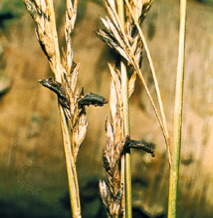The Science of Consciousness:
Chapter 15: Drugs and Consciousness
What this chapter is about: How do drugs, particularly hallucinogenic drugs, affect consciousness? How do changes in neurotransmitter levels lead to the psychedelic experience?
Corrections
p. 356. The reference to the box near the bottom of the page about urban myths and LSD use should of course refer to Box 15.3 (not 15.2).
Figure 15.13. It should be obvious but the legend should start "The writings of Carlos Castaneda ...". It proved impossible to get a photograph of Castaneda himself.
Links to work on drugs
Erowid. One of the best known sites on psychoactive drugs, including both pharmaceutics used to treat mental illness, and hallucinogens. The site also provides wide coverage of non-drug methods of reaching higher states of consciousness.
Psychonaut Wiki. An excellent site about all means of exploring higher states of consciousness.
More on using psychedelics and dissociative drugs to improve mental health
How ketamine became the new frontier of wellness.
Ergot
In my lectures on consciousness at the University of Dundee I talked about ergot and ergot poisoning. I left this discussion out of my book because of space limitations, but cover it here.
Pont-Saint-Esprit mass poisoning. On 15 August 1951 over 250 people fell mysteriously ill in the small town of Pont-Saint-Esprit, located on the Rhone river in the Gard department of southern France. Five people died and over 50 were committed to asylums. The original symptoms included nausea, vomiting, diarrhoea, and fever; for many the symptoms worsened, leading to convulsions and hallucinations. On the night of 24 August, one 11 year boy strangled his mother, and a man killed himself by jumping from a tall building, believing himself to be in plane. Although other explanations have been proposed such as mercury poisoning, the preferred explanation is that the local rye flour used in making bread had been contaminated by ergot. A yet more outlandish explanation is that the poisoning was actually a secret experiment by the CIA to explore the effects of LSD, but the symptoms shown don't correspond to LSD dosing.
(Source and for more information see the Wikipedia entry and the BMJ article by Gabbai et al., 1951).
Ergot. Ergot is a group of fungi of the genus Claviceps. The most well known is the rye ergot fungus Claviceps purpurea, which can grow on the grain rye, particularly in wet conditions. Ergot contains the alkaloid ergotamine, a toxic compound that results in ergot poisoning, as well as lysergic acid and other alkaloids. Incidents of ergot poisoning about through history. Apart from the Pont-Saint-Esprit mass poisoning. The long term effects of ergot poisoning are called ergotism, and can include loss of extremities through gangrene caused by vasoconstriction. The vasoconstrictive properties of ergotamine have led to it being used in small doses (1 mg) for a treatment for migraine (see Chapter), although it has now been largely been replaced by the safer triptans. The hallucinogenic effects result from disruption to the amine neurotransmitter system (see the description of how LSD works in my book). Ergot poisoning has been called "St. Anthony’s Fire", after the Hospital Brothers of St. Anthony, who were renowned for their ability to treat ergotism, as well as the burning sensations resulting from the vasoconstriction.
Discovery of LSD. Albert Hoffman first synthesised LSD (lysergic acid diethylamide) in 1938 from ergotamine, a substance derived from the ergot fungus. He put it aside until 16 April 1943, when he decided to re-examine it, and accidentally ingested it through his fingertips and observed its hallucinogenic effects. Three days later, Hofmann intentionally ingested 250 micrograms of LSD. The 19th of April is now known as "Bicycle Day", because he began to feel the effects of the drug as he rode home on his bike. As they say, this ride was the first intentional LSD trip. Note that Hoffman wasn’t originally intending to synthesise an hallucinogen, but to explore the medicinal effects of the substances found in ergot.
Videos
Televised trip. Christopher Mayhew tried mescaline on British television for an episode of the documentary Panorama in 1955.
Pont Saint Esprit. Secret CIA experiment, or ergot poisoing? There are several videos available, but this one is the most popular.
Further reading
Kingsland, J. (2019). Am I dreaming? The new science of consciousness and how altered states reboot the brain. London: Atlantic Books.. Kindle version available. ISBN: 978-1786495501. See Chapter 11 on ASCs.

